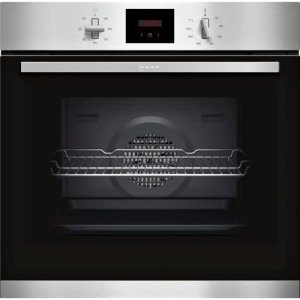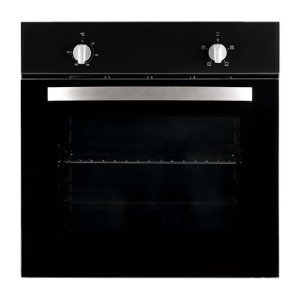The Ultimate Guide to Single Fan Ovens
Single fan ovens, likewise called convection ovens, have actually acquired popularity in modern-day cooking areas due to their capability to provide consistent cooking outcomes. Unlike standard ovens, single fan ovens flow hot air around the food, permitting even heat distribution. This article takes a thorough look at the functions, benefits, and considerations associated with single fan ovens.
What is a Single Fan Oven?
A single fan oven is created with a fan and an exhaust system that distribute hot air uniformly throughout the cooking cavity. This innovation allows food to prepare more consistently and typically minimizes cooking times compared to traditional ovens. The fan can be discovered at the back of the oven and operates in conjunction with the heating components, helping with effective heat transfer.

Key Features
| Function | Description |
|---|---|
| Even Cooking | Guarantees that food cooks equally and reduces the threat of hot or cold areas. |
| Time Efficiency | Reduces cooking time by as much as 20-25% compared to conventional ovens. |
| Temperature Consistency | Maintains steady temperature level, resulting in dependable cooking outcomes. |
| Flexibility | Suitable for baking, roasting, and broiling throughout a range of meals. |
| Energy Efficiency | Normally takes in less energy due to much shorter cooking times. |
Benefits of Single Fan Ovens
Uniform Cooking: The even distribution of heat makes sure that all sides of the food are prepared all at once. This assists in attaining aspects like browned surface areas and moist centers, particularly in baked goods.
Faster Cooking Times: The hot air blood circulation allows food to prepare quicker compared to conventional ovens. This efficiency is particularly useful for busy people or families with tight schedules.
Energy Savings: Thanks to their quicker cooking times, single fan ovens can frequently take in less energy, making them a more sustainable alternative for ecologically conscious consumers.
Multi-Shelf Cooking: Due to the even heat circulation, multiple dishes can be prepared simultaneously on different shelves without flavor transfer.
Reduced Need for Preheating: Many dishes can be carried out without preheating, thus saving extra energy and time.
Considerations When Choosing a Single Fan Oven
When picking a single fan oven, numerous aspects ought to be thought about to guarantee it satisfies your cooking requires:
Size: Choose an oven that fits comfortably in your kitchen area while providing sufficient capacity for cooking or baking.
Functions: Many single fan ovens feature additional features such as self-cleaning options, programmable settings, and several cooking modes (e.g., bake, roast, grill). Evaluate which functions are essential for your cooking style.
Energy Rating: Look for energy-efficient designs that can help in reducing utility expenses while also benefiting the environment.
Brand Reputation: Research different brand names and their evaluations to make sure dependability and after-sales service.
Budget: Establish a budget that considers both the initial financial investment and long-lasting operating expense.
How to Use a Single Fan Oven Effectively
Using a single fan oven is relatively simple. However, to maximize its benefits, some suggestions are vital:
Adjust Temperatures: It is frequently advised to reduce the dish temperature level by roughly 20 degrees Celsius (or 25 degrees Fahrenheit) compared to traditional ovens.
Use Shallow Baking Trays: Shallow trays allow better air circulation around the food, promoting even cooking.
Prevent Overcrowding: Leave space in between meals to make sure the hot air flows easily and cooks whatever evenly.
Rotate Dishes: For even much better results, think about rotating baking trays halfway through the cooking process, particularly with bigger or thick products.
Frequently Asked Questions About Single Fan Ovens
1. What kinds of foods can I prepare in a single fan oven?
Single fan ovens are versatile and suitable for baking, roasting meats, cooking casseroles, and even dehydrating fruits. They can deal with a large range of dishes throughout different foods.
2. Do I still need to pre-heat a single fan oven?
While many recipes can be cooked without pre-heating, some baked goods, like soufflés or particular bread recipes, may perform best when the oven is preheated.
3. Can I bake multiple trays of cookies at the same time in a single fan oven?
Yes, one of the benefits of a single fan oven is that you can bake several trays at when without compromising outcomes. Simply make sure enough area for air blood circulation around each tray.

4. Is a single fan oven more energy-efficient than a standard oven?
Yes, single fan ovens can be more energy-efficient due to much faster cooking times, which minimizes overall energy usage.
5. Are single fan ovens great for baking bread?
Single fan ovens are outstanding for baking bread as they offer even heat, which is essential for attaining a good rise and crust.
In conclusion, single fan ovens provide various benefits in flexibility, performance, and cooking quality. Their capability to cook evenly and save time makes them an attractive choice for home chefs. When picking a single fan oven, consider elements such as size, features, and energy usage to find the ideal fit for your cooking needs. With correct use and care, a single fan oven can become a vital home appliance in any kitchen, enhancing both preparing experiences and results.